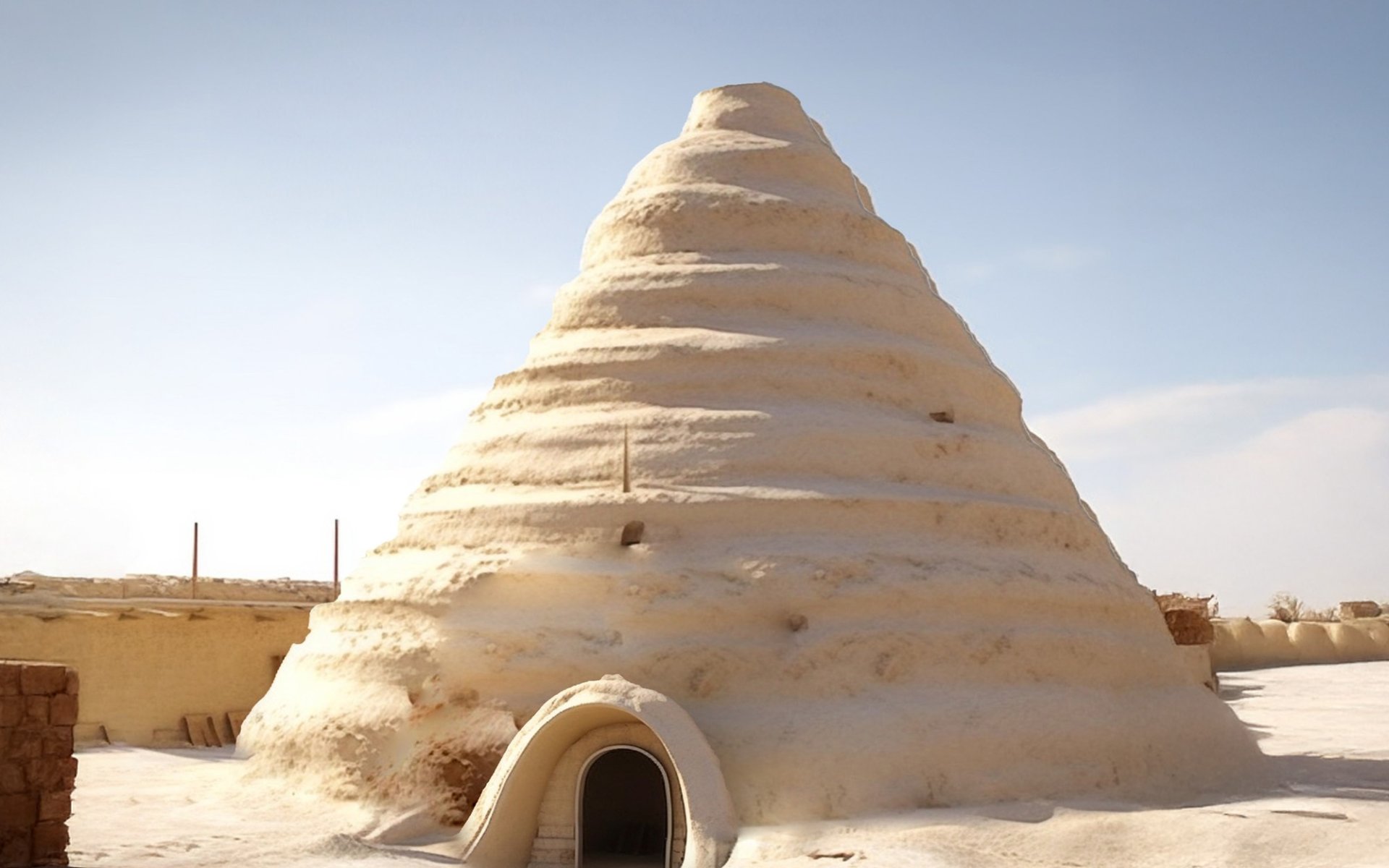Yakhchāl

Amidst the scorching deserts of modern-day Iran, thousands of years ago, the Persians constructed Yakhchāl, a marvelous ancient architectural structure that functioned like a refrigerator, used for preserving food and ice in an era before electricity existed.
Origins and Structure of Yakhchāl
The word Yakhchāl means ice pit in Persian. The Persians built this architecture 2,000 years BCE, during the Achaemenid Empire. They designed Yakhchāls to be tall, dome-shaped structures, dozens of meters high, with thick walls made from a mixture of sand, clay, straw, and animal hair. These materials not only provided strength but also possessed excellent insulating properties that helped maintain coolness within the Yakhchāl.
Ingenious Cooling Innovations
Furthermore, the Persians developed another astonishing innovation: the Qanat, an underground water transportation system that brings water from subterranean layers to the surface. This system facilitated the delivery of water to the Yakhchāl during winter to create ice blocks for use in the summer.
Yakhchāl construction employed several other mechanisms to maintain cool internal temperatures. One notable technology was Windcatchers, or wind towers, attached to the top of the Yakhchāl like chimneys. These wind towers would draw cool air from outside into the Yakhchāl, circulating it. The denser, cool air would sink to the bottom, pushing warmer air upwards. This ensured that the air at the bottom of the Yakhchāl remained sufficiently cold to preserve food for extended periods.
Functionality and Cultural Heritage
Yakhchāl's functionality was identical to modern refrigerators, as it helped preserve fresh food and facilitated the creation and storage of ice. Notably, the ice produced by Yakhchāl in that era was also popularly used to make a dessert called Faloodeh. Faloodeh is a sorbet-like dessert, distinguished by its sweet and sour taste, with main ingredients including fresh lemon juice, rosewater syrup mixed with spices, crushed ice, and cornstarch vermicelli, similar to the Thai dessert "Sarim."
The design of the Yakhchāl showcases the remarkable capabilities of ancient Persian engineers, who were able to create astonishing architecture adapted to harsh desert climates, skillfully utilizing natural resources. This architecture later became a prototype for modern refrigeration. Certainly, no one would have imagined that humans thousands of years ago possessed such incredible creativity.
Today, with numerous modern cooling methods, the importance of Yakhchāl has gradually diminished. However, these magnificent structures are not forgotten. There are efforts to restore and preserve Yakhchāls, both as cultural heritage and as symbols of sustainable engineering. Due to damage from desert storms, only a few Yakhchāls remain in Iran and some parts of neighboring countries like Tajikistan. Some Yakhchāls have even been designated as UNESCO World Heritage Sites.


